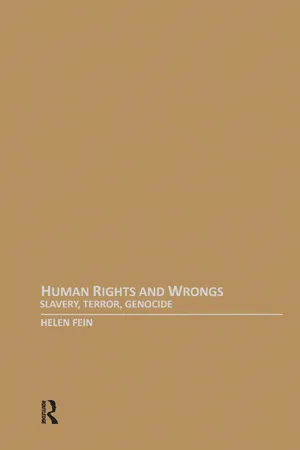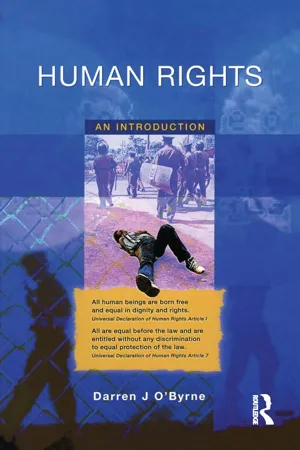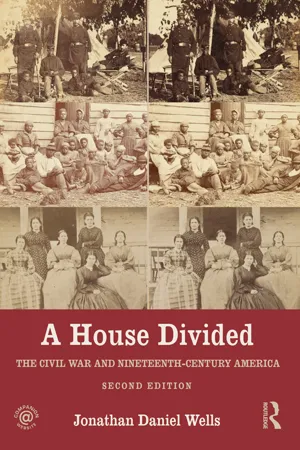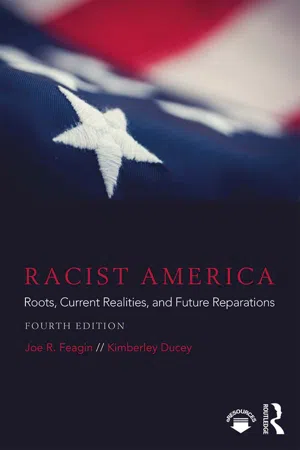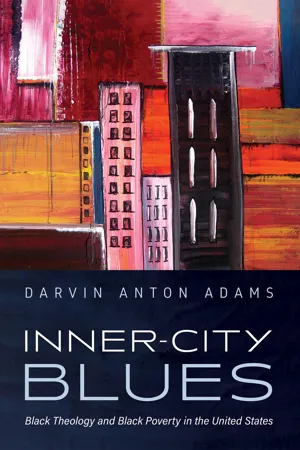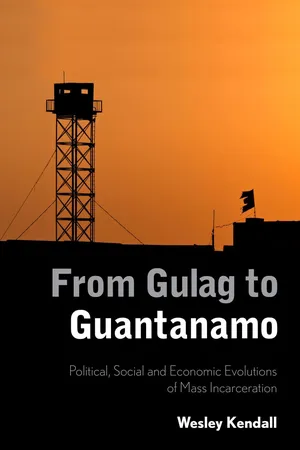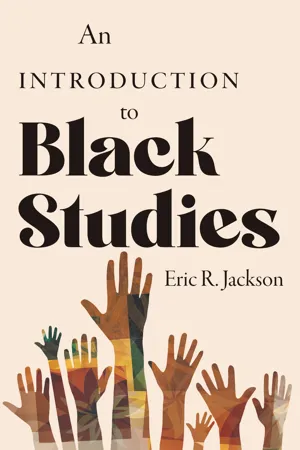History
American Slavery
American slavery refers to the system of forced labor and exploitation of African people in the United States from the early 17th century until the end of the Civil War in 1865. Slavery played a central role in the economic, social, and political development of the nation, and its legacy continues to impact American society today, particularly in terms of racial inequality and systemic discrimination.
Written by Perlego with AI-assistance
Related key terms
Related key terms
1 of 4
Related key terms
1 of 3
9 Key excerpts on "American Slavery"
- eBook - ePub
Modern Slavery and Bonded Labour in South Asia
A Human Rights-Based Approach
- Elena Samonova(Author)
- 2019(Publication Date)
- Routledge(Publisher)
1 Slavery and bonded labourA problem of definition
Definitions of slavery
Slavery is one of history’s oldest social institutions. The first legal documentation of the sale of slaves found in Mesopotamia is dated 2300 bc (see also Drescher, 2010; Olusoga, 2018). Various international conventions and covenants declare slavery as a grave violation of human rights and even as a crime against humanity (Gallagher, 2008; Miers, 2008; Rassam, 1998; van den Anker, 2004). However, despite these prohibitions the practices of slavery have not yet disappeared from the Earth. In 2016 the International Labour Organization (ILO) claimed that in the past five years 89 million people have experienced some form of slavery for periods ranging from a few weeks to five years (ILO, 2017, p. 10). In 2017 alone at least 40.3 million people were ensnared in various forms of modern slavery.1 However, what does it mean to be enslaved? How can we decide whether a person is trapped in slavery or just suffers from unfair and exploitative labour conditions?Defining slavery is not an easy task, but doing so has crucial implications for the process of the abolition of slavery. As Androff (2010) argued, if slavery is defined too narrowly, some slavery practices may not be considered during policy implementation and some people at risk will be excluded from such policy, yet if slavery is defined too widely, the definition could become meaningless (p. 211). In the Western tradition, slavery is often in direct opposition to freedom: “whereas a ‘free’ individual enjoyed basic rights of citizenship, choice of occupation and lifestyle … a slave was a chattel with hereditary status” (Campbell, 2005, p. viii). Such an understanding of slavery is mostly based on the experiences of slavery in the Americas, where the slaves were used in plantation work and were seen as private property that could be bought and sold freely. However, this is only one extreme form of slavery; numerous other types of slavery exist in the modern world. - eBook - ePub
Human Rights and Wrongs
Slavery, Terror, Genocide
- Helen Fein(Author)
- 2015(Publication Date)
- Routledge(Publisher)
2 Twentieth-Century Slavery within the State Slavery is the permanent, violent domination of natally alienated and generally dishonored persons…. We may summarize the two modes of representing the social death that was slavery by saying that in the intrusive mode the slave was conceived of as someone who did not belong because he was an outsider, while in the extrusive mode the slave became an outsider because he did not or no longer belonged. —Orlando Patterson, Slavery and Social Death, 1982 It is widely believed that slavery ended in the nineteenth century with the cessation of the transatlantic slave trade from Africa to North America, but it continues in other guises. This chapter focuses on slavery within the state and the next chapter looks at global slavery and trafficking for the sex trade among countries. One must ask: What constitutes slavery fundamentally? Box 2.1 cites legal definitions of both slavery and trafficking. The reader might note the broadening of the practices cited from 1956 to 2000 beyond the fact of ownership and the stress on motives of slaveholders and traffickers. Chattel slavery—holding slaves as movable property that can be bought or sold—is one of many forms of slavery, which include penal enslavement, state slave labor, and debt bondage. Slavery has an ancient history, as do other exploitative forms of labor. The addition in the 1956 Supplementary Convention of “the sale or involuntary transfer of women for marriage ‘without the right to refuse’” is consistent with the implication of autonomy in the sixth right in our list of life integrity rights (see table 1.1, ch. 1), “the right to procreate and cohabit with family.” The 1956 Convention focuses on slave traders, owners, and family members as violators. Violations by the latter include involuntary transfer of women in marriage for money, involuntary transfer of a wife to another person, and inheritance of the widow - eBook - ePub
Human Rights
An Introduction
- Darren O'Byrne(Author)
- 2014(Publication Date)
- Routledge(Publisher)
7Suffice it to say that a vast library of work has been carried out, primarily by historians, on chattel slavery as it existed in the United States prior to the Civil War. It is important to touch on some of this here. However, in so far as much of this was polemical in nature, we should treat it with care when addressing, as we shall below, some of the key sociological questions, such as those which relate to the role played by slavery as an institution within wider social, cultural, economic, and political conditions. Historians such as Ulrich Bonnell Phillips and those who followed him tended to discuss slavery not in terms of rights but in terms of its positive contribution to society, both as a means of social control, and also as an educational and civilising experience for the ‘inferior’ black slave.8 If such pro-slavery pieces tended to be somewhat sympathetic towards the plight of the slaves, there were also those which adopted a far more aggressive, racist view on the issue. In the early part of the twentieth century, social Darwinism was beginning to take form as an intellectual perspective. Of course, as the century progressed, so did the academic debate, with various reports and studies setting out to counter either (or both) the paternalistic pro-slavery literature or the biological-reductionist rants. In this respect, studies by Gunnar Myrdal and Kenneth Stampp are significant.9 However, as Stanley Elkins points out, even as thorough and ground-breaking a research project as that undertaken by Stampp could not escape from the agenda which had been set by the earlier writers — an agenda driven by moral polemic which betrayed ‘all the characteristics one might expect of white men who knew nothing of what it meant to be reared in slavery’.10 - eBook - ePub
A House Divided
The Civil War and Nineteenth-Century America
- Jonathan Wells(Author)
- 2016(Publication Date)
- Routledge(Publisher)
The African slave trade is one of the darkest stories in human history. The ruthlessness with which men and women of all ages were forcibly transported to the New World is stunning. Yet the slave trade did not begin with the opening of the Americas in the 1600s. Europeans had owned slaves (both white and black) long before the beginning of American colonization. In ancient civilizations in Egypt, Greece, and Rome, slavery was an important part of the economy and society. Africans themselves had been active for hundreds of years in capturing other Africans and selling them into slavery. But slavery meant different things at different times, and scholars have discovered that the concept of slavery is a complicated one. If you are used to thinking of slaves as agricultural laborers, you might be surprised to find that in world history, slaves were often soldiers, government officials, wives, concubines, and tutors, and that some societies even allowed their slaves to participate in politics.Despite the long and sad history of human slavery, bondage seemed particularly brutal in the New World. The first colonists and traders to bring Africans to the Americas were the Spanish and Portuguese, who used them to replace or supplement the dwindling numbers of Indian slaves toiling in Caribbean colonies. Large plantations, some with thousands of slaves, grew sugar and other crops. Jamaica, Haiti, Cuba, Bermuda, and other islands were the centers of the slave trade in the New World. Slavery in the Caribbean was brutal, with punishments swift and harsh on large sugar plantations or in mining operations. Tens of thousands of slaves also went to South America, particularly Brazil, which in the 1880s became the last country in the western Hemisphere to outlaw slavery. In fact, after the South lost the Civil War many southerners moved to Brazil, carrying their slaves with them, and reestablished their plantations where a community of descendants from the American South lives to this day. Slavery, therefore, was not confined to the colonial South; it was a worldwide practice that had involved many of the world’s leading nations, and had spread to the New World particularly rapidly. - eBook - ePub
Racist America
Roots, Current Realities, and Future Reparations
- Joe R. Feagin, Kimberley Ducey(Authors)
- 2018(Publication Date)
- Routledge(Publisher)
10With much farm land available for new European immigrants, colonial entrepreneurs and development companies frequently could not secure enough white laborers. Thus, importation and enslavement of African women, men, and children not only stemmed from a desire for profit but also from a concern with developing a scheme of control that maintained bond-labor against the resistance of those enslaved. The color and cultural differences of Africans typically made them easier for whites to identify for purposes of profitable enslavement and sustained control.The Legal Establishment of Slavery
The first Africans brought into English colonies were bought by Jamestown colonists from a Dutch-flagged ship in 1619. Laws firmly institutionalizing slavery were not put in place in the English colonies until the mid-seventeenth century. Yet, even during the earliest decade, the 1620s, the Africans were treated differently from English colonists. As early as 1624, one court case made clear that a “negro”—note the early white naming of Africans and lowercase spelling—could testify in court only because he was a convert to Christianity. A “negro” status was already socially and legally inferior to a European colonist’s status.11 Historians have shown that Christianity in this period, as later, was dogmatic and Eurocentric in “ideology , organization, and practice.”12 In this 1624 example the Eurocentric viewpoint included the idea that a person must become a Christian to have legal rights. To the present day, many apologists for centuries of enslavement of African Americans have argued that one of the virtues of slavery was bringing this Christianity to those enslaved.Early on, the human degradation of this slavery was clear. In one 1671 declaration Virginia’s General Assembly put “sheep, horses, and cattle” in the same category as “negroes.” Colonial laws early on attempted to prevent black men and women from running away; there were barbaric laws encompassing the whipping, castration, or killing of those who were rebellious. Slavery meant more than coerced labor. Enslaved black men, women, and children were legally subjugated in or excluded from key areas of all major societal institutions, including economic, legal, and political institutions.13 - eBook - ePub
Inner-City Blues
Black Theology and Black Poverty in the United States
- Darvin Anton Adams(Author)
- 2023(Publication Date)
- Cascade Books(Publisher)
216 Wright’s analysis is helpful to Baptist’s argument that slave labor built and developed the American economy. The massive number of African slaves brought to the United States signifies an exponential amount of hardcore slave labor in various regions of the country.Concerning the other half of the story of how slavery evolved over time and numerous generations of African ancestors and African American families, Baptist states that “Slavery’s story gets told in ways that reinforce all these assumptions.”217 The story of slavery often time fails to mention that African slaves had already become an economic enterprise by the time they arrived in Virginia in 1619 . J. Deotis Roberts affirms that, “Slavery became an established institution in the New World. Consequently, an abundant supply of slaves was demanded by numerous business-minded, slave masters. Forts and bases were established along the Ivory Coast and other outlets to the sea. Slaves were captured through raids in the interior, or through wars between the tribes instigated by the slavers. In exchange for slaves the Europeans brought fabrics, copper, glass, and firearms for the African kings.”218 With the introduction of sugar and the opening up of the Western hemisphere to European conquest at the end of the fifteenth century, the volume of slaves increased significantly.219 - eBook - ePub
From Gulag to Guantanamo
Political, Social and Economic Evolutions of Mass Incarceration
- Wesley Kendall(Author)
- 2015(Publication Date)
- Rowman & Littlefield International(Publisher)
The sordid history of men exploiting and enslaving other men in pursuit of profit is an unfortunately long one and transcends all cultural, geographic and racial boundaries. The revelatory moment in which early man first understood the nature of the freedom he possessed is unfortunately obscured by history, but one can imagine that not long thereafter arose the impulse in other men to take ownership of that freedom. The insight that W. E. B. DuBois offers in the quote above is his argument that freedom and slavery, in the minds of most, are mutually inclusive concepts, and one cannot be separated from the other. From a broadly esoteric perspective, one can imagine that DuBois implied that freedoms are accompanied by some form of debt, such as the freedoms enshrined in the US Constitution that have been paid for by America’s forebears for their successors to enjoy. A more literal interpretation of DuBois, a preeminent African American author, would suggest that most men perceive freedoms as privileges, exercised vigorously by those with the economic power to enforce them, that are borne on the backs of others. This conception of freedom and labour as integral parts of a fiscal equation is edifying for the purposes of understanding the economies of mass incarceration. This chapter explores how freedom has become historically equated with economic power, commoditized and then efficiently exploited through the system of US slavery, which then evolved into one of mass incarceration.THE AMERICAN INDUSTRIAL REVOLUTION AND THE ECONOMICS Of SLAVERY
The majority of historical texts that contemplate the American Slavery era are inclined to direct the reader’s attention to the social and racial contexts of slavery and largely deflect focus away from the national economic incentives that made the trafficking of slaves a profitable enterprise.1 The desire to diminish the importance of the profit motive in the establishment of the American slave trade was first stoked immediately after the Civil War ended, when the interests of national reconciliation were considered paramount to the continued moral denunciation of southern slave states ravaged by the war and to begin the process of Reconstruction. ‘Above all, the historians of a reunified nation insisted that slavery was a premodern institution that was not committed to profit seeking’, states historian Edward Baptist, in his book The Half Has Never Been Told.2 - eBook - ePub
- Eric R. Jackson(Author)
- 2023(Publication Date)
- The University Press of Kentucky(Publisher)
About 55 percent of the enslaved population of the South cultivated cotton, 10 percent grew tobacco, and 10 percent grew rice and hemp and produced sugar. About 15 percent were house servants, and the remaining 10 percent worked in a trade or in industry. Tobacco remained the most important cash crop in Kentucky, Maryland, North Carolina, Virginia, and parts of Missouri. Tobacco was a very difficult crop to produce, requiring a long growing season and very careful cultivation. In comparison, rice production was dominant in the low country of South Carolina and Georgia. Sugar production was restricted to southern Louisiana.Despite the economic significance of tobacco, rice, and sugar, by 1860, cotton exports accounted for 50 percent of US exports, bringing in $1 billion annually, and about 1.8 million of the 2.5 million enslaved people in the United States were involved in cotton production. But the nature of cotton production meant that laborers were required in the field only at harvest time. Cotton production therefore changed the nature of slavery somewhat, a plantation’s enslaved workers being hired out or leased during the off-season. Most of the skilled laborers who were hired out worked in southern towns and cities, where they had the opportunity to interact with free Blacks. They also interacted with their urban counterparts, who served as artisans, domestics, waiters, and general laborers, meaning they did the work that White immigrants refused to do. What was different about their situation, however, was that many urban slaveholders let their captives buy their freedom over a set period of years to reduce the likelihood of their becoming runaways.Regardless, whatever a slave’s situation, the peculiar institution was, by definition, a forced system of labor maintained by the threat of physical violence. Many slaveholders denied that they mistreated their enslaved workers, conceiving of themselves as benevolent fathers. And, even if they resorted to harsh treatment, correcting the behavior of servants in this manner was justified by the Bible. Nevertheless, fear of the lash was effective.Despite the expansion of slavery, the African American family endured. The enslaved developed their own semiautonomous communities that had at their core the family. Although marriages of enslaved people were not legally recognized or protected, many took place anyway and endured for decades. Couples usually lived together in cabins on their master’s plantation. Within these quarters, families, both nuclear and extended, lived, loved, and played. Parents instilled in their children the importance of being able to rely not only on grandparents, aunts, uncles, and cousins but also on biologically related members of the household in the face of physical assault, especially of women and girls, and other indignities. - eBook - ePub
Racecraft
The Soul of Inequality in American Life
- Barbara J. Fields, Karen E. Fields(Authors)
- 2012(Publication Date)
- Verso(Publisher)
Probably a majority of American historians think of slavery in the United States as primarily a system of race relations—as though the chief business of slavery were the production of white supremacy rather than the production of cotton, sugar, rice, and tobacco. One historian has gone so far as to call slavery “the ultimate segregator.” 8 He does not ask why Europeans seeking the “ultimate” method of segregating Africans would go to the trouble and expense of transporting them across the ocean for that purpose, when they could have achieved the same end so much more simply by leaving the Africans in Africa. No one dreams of analyzing the struggle of the English against the Irish as a problem in race relations, even though the rationale that the English developed for suppressing the “barbarous” Irish later served nearly word for word as a rationale for suppressing Africans and indigenous American Indians. 9 Nor does anyone dream of analyzing serfdom in Russia as primarily a problem of race relations, even though the Russian nobility invented fictions of their innate, natural superiority over the serfs as preposterous as any devised by American racists. 10 Loose thinking on these matters leads to careless language, which in turn promotes misinformation
Index pages curate the most relevant extracts from our library of academic textbooks. They’ve been created using an in-house natural language model (NLM), each adding context and meaning to key research topics.
Explore more topic indexes
Explore more topic indexes
1 of 6
Explore more topic indexes
1 of 4

